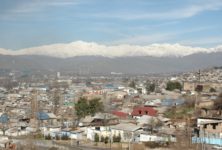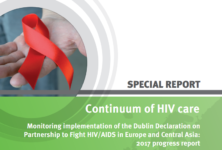Analysis of national policies also notes that implementation lag also leads to missed prevention and life-saving opportunities
When the World Health Organization issued an early update to its HIV treatment guidelines in September 2015, the new recommendations drew on years of mounting evidence that immediate antiretroviral treatment for people diagnosed with the virus saves lives, prevents transmission, averts serious illnesses, and is essential to control of the pandemic. In fact, by then,18 high- and middle income countries that include the United States already had adopted policies that reflected their recognition of the benefits early treatment offers individual and public health. Nearly a year after the release of the WHO update, however, only three countries in sub-Saharan Africa have adopted the latest guidelines as their criteria for treatment access.
That lag reflects a trend that has slowed treatment access and progress against HIV in countries with the greatest numbers of people living with the virus, say authors of a report published this week in the Southern African Journal of HIV Medicine. Their study examined the amount of time between the issuance of WHO’s 2009, 2013 and 2015 guidelines, and national policies adopting them across 33 sub-Saharan African countries. Although each change in WHO guidelines reflected an accumulated consensus of best practices that had been evaluated by experts and supported by evidence, adoption of the guidelines has been slow, authors found.
Countries took an average of two years to adopt 2009 guidelines recommending people with HIV start treatment when their CD4 — or immune cell — counts dropped to 350 per cubic millimeter of blood, rather than waiting until their immune systems were more damaged, as previous guidelines had indicated, with counts of 200 or below. Three years after the release of 2013 guidelines that treatment should start earlier, when immune cell counts dropped to 500 or below, 11 countries, including some with the highest rates of infection, have yet to incorporate the recommendations into their national policies.
By comparison, adoption of WHO 2015 guidelines to treat all people diagnosed with HIV may move faster, if public announcements of intention are an indication, the authors say. But actually putting the guidelines into practice — including by allocating resources and adjusting service delivery and supply chains — also will entail further delays.
In the meantime, the authors note, the benefits of the guidelines will be denied where they are needed most. “With nearly 2200 AIDS-related deaths and 3800 new infections each day,” they conclude, “translating the new science into action more quickly needs to become a major public health priority for the sub-Saharan African region.”
Investments in efficient care systems, including through reduced reliance on CD4 testing, treatment initiation by nurses, community-based testing and medicine distribution will help, they say, as will recognition by countries of the necessity to commit funding to the recommended standards of care and treatment.
The study, by Somya Gupta of International Association of Providers of AIDS Care, New Delhi, India, and Reuben Granich of International Providers of AIDS Care, Washington, DC, drew on the most recent national treatment guidelines collected at HIVpolicywatch.org.


 ПОИСК ПО САЙТУ
ПОИСК ПО САЙТУ  поиск по ресурсному центру
поиск по ресурсному центру 


